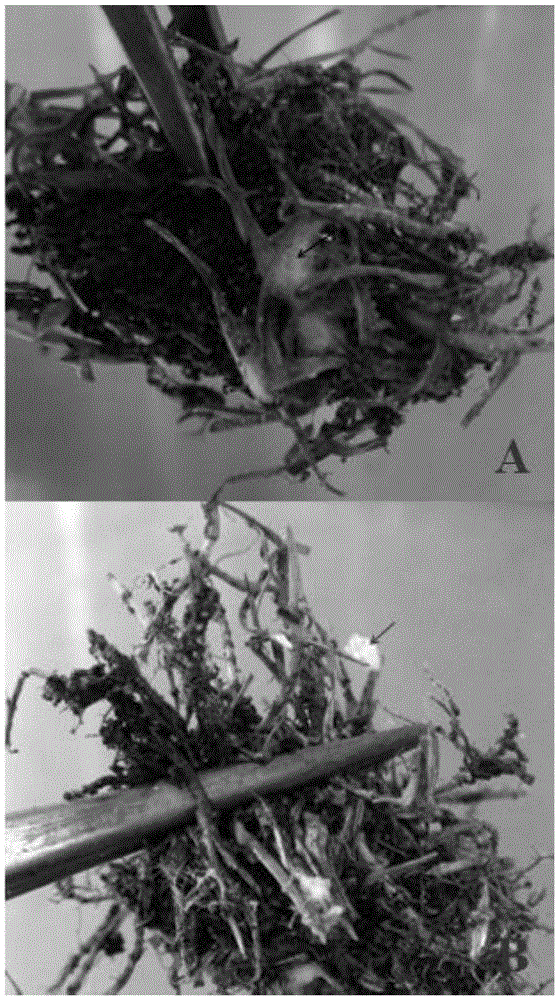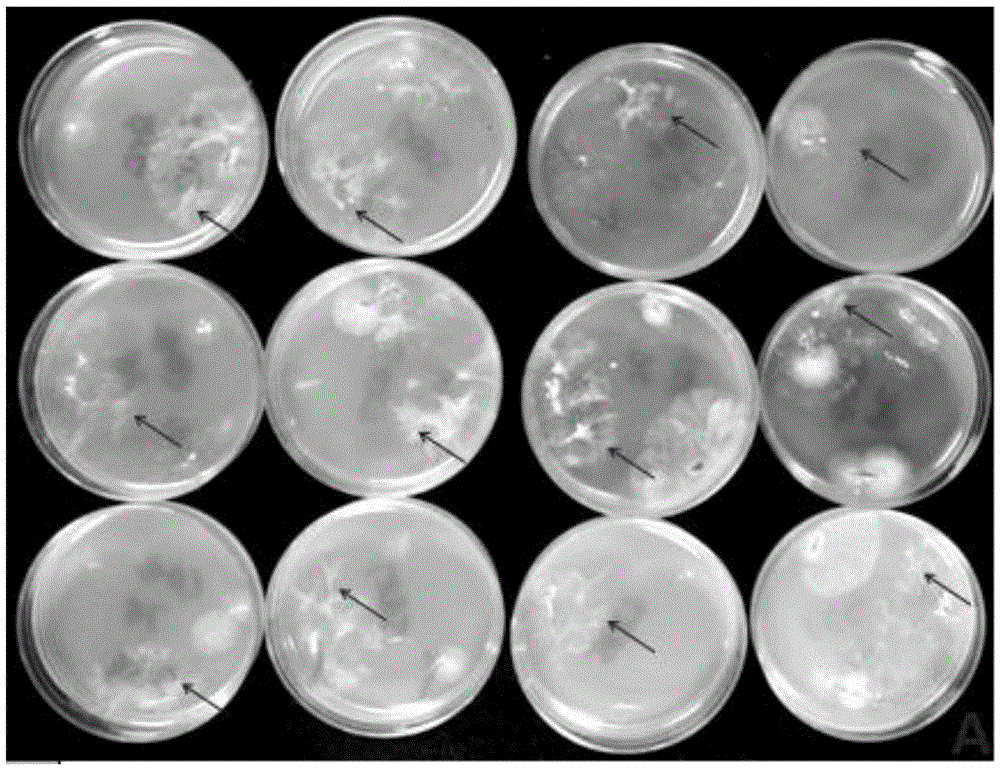Method for separating Sclerotinia homoeocarpa
A technology of lawn dollar spot bacteria and isolation method, which is applied in the field of separation of lawn dollar spot bacteria, can solve the problems of difficult to isolate target bacteria, reduce the success rate of target bacteria isolation, and reduce the isolation efficiency of pathogenic bacteria, so as to achieve separation efficiency and success rate Improve and promote the growth of coin spot bacteria, and the effect of simple operation
- Summary
- Abstract
- Description
- Claims
- Application Information
AI Technical Summary
Problems solved by technology
Method used
Image
Examples
Embodiment 1
[0032] 1. Experimental method
[0033] Adopt the inventive method to separate the turf coin spot bacterium, comprise the steps:
[0034] (1) Disease sample collection: Use a soil sampler to cut out the plants and soil samples at the junction of disease and health with typical dollar spot symptoms with a diameter of 4 cm and a height of 6-8 cm as disease samples, put them in an envelope, transport them at room temperature, and bring them back to the laboratory Then transferred to 4 ℃ refrigerator for storage;
[0035] (2) Moisturizing treatment of diseased samples: Take out the diseased samples preserved in step (1), place them in flower pots or trays that have been sterilized (dried at 80°C for 2 hours), and spray sterile water to make the humidity not lower than 80%, after sealing with parafilm, place the diseased samples in a light incubator for moisturizing culture for 2-3 days, and the culture conditions are 22-25°C light for 16h / 18-20°C dark for 8h alternately;
[0036]...
Embodiment 2
[0051] 1. Experimental method
[0052] Isolation of turfgrass dollar spot bacterium by traditional method comprises the following steps:
[0053] (1) Disease sample collection: collect disease samples with typical symptoms of dollar spot in the field, and transfer them to the laboratory for isolation of pathogenic bacteria within 24 hours;
[0054] (2) Disease sample pretreatment: select leaf tissues with typical disease symptoms, use 0.5% sodium hypochlorite to disinfect them for 60 seconds, and then rinse them several times with aseptic;
[0055] (3) Isolation of pathogenic bacteria: after the disinfection treatment in step (2), the clean leaves were placed on the APDA medium, and cultured in the dark at 25°C for 2 days;
[0056] (4) Purification of pathogenic bacteria: after the mycelium grows out, cut the tip of the mycelium at the edge of the colony and transfer it to a new APDA medium for 3-5 days in dark conditions at 25°C to obtain purified pathogenic bacteria;
[00...
PUM
| Property | Measurement | Unit |
|---|---|---|
| diameter | aaaaa | aaaaa |
| height | aaaaa | aaaaa |
Abstract
Description
Claims
Application Information
 Login to View More
Login to View More - R&D
- Intellectual Property
- Life Sciences
- Materials
- Tech Scout
- Unparalleled Data Quality
- Higher Quality Content
- 60% Fewer Hallucinations
Browse by: Latest US Patents, China's latest patents, Technical Efficacy Thesaurus, Application Domain, Technology Topic, Popular Technical Reports.
© 2025 PatSnap. All rights reserved.Legal|Privacy policy|Modern Slavery Act Transparency Statement|Sitemap|About US| Contact US: help@patsnap.com



